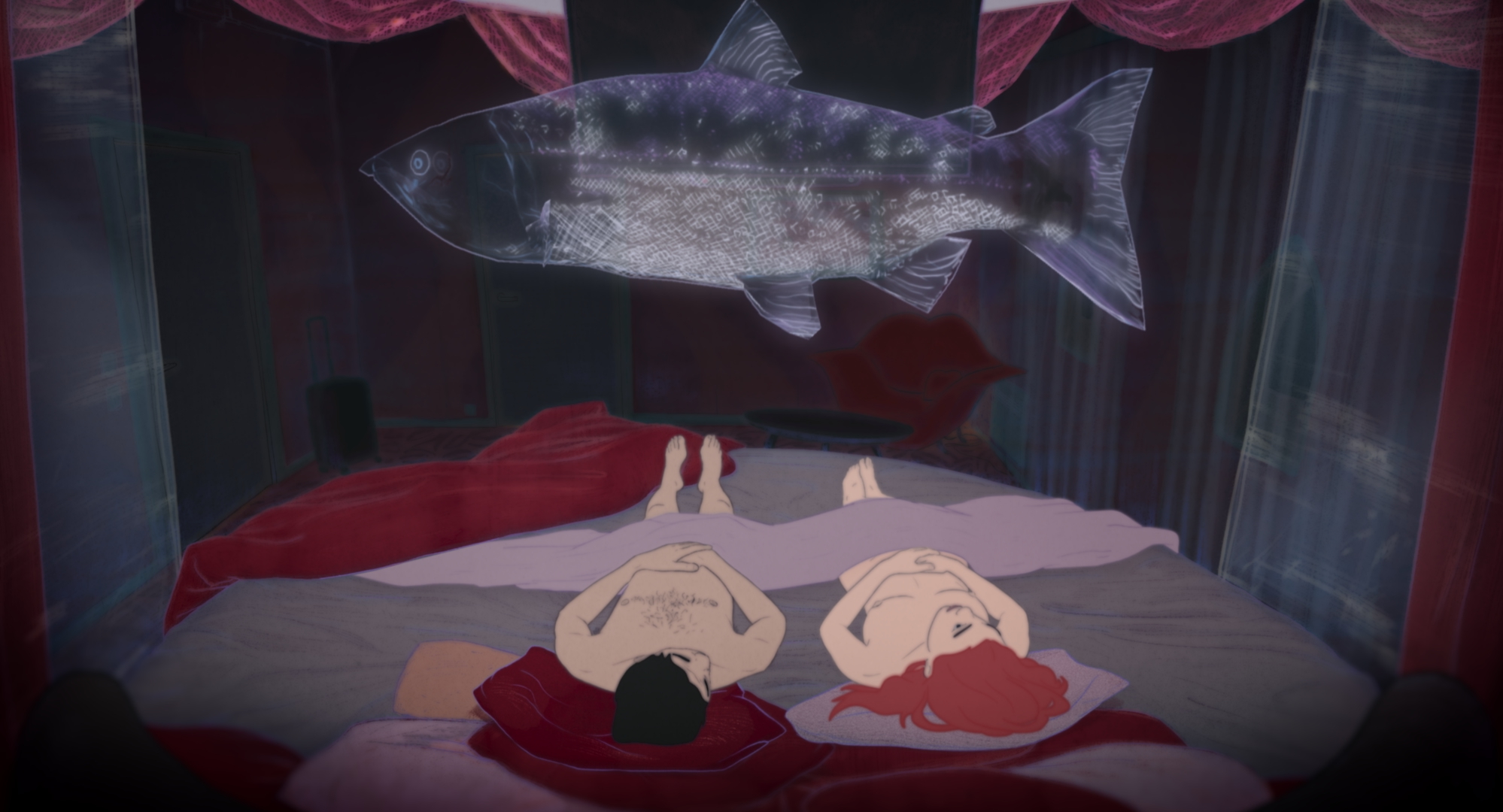The short stories of Haruki Murakami are becoming an increasing fixture on the big screen––it may have taken considerably more time since their initial publications, but not since Stephen King’s earliest collections has an author’s back catalog found itself getting adapted so rapidly. After Lee Chang-dong and Ryusuke Hamaguchi managed to weave epic tales of obsession and grief from two comparatively conversational works (in their respective masterpieces Burning and Drive My Car), a handful of other tales are adapted far more faithfully for the screen in Pierre Földes’ animated anthology.
Named after Murakami’s 2006 collection of the same name, Blind Willow, Sleeping Woman recontextualizes several of his more fantastical short stories, relocating them to a Tokyo still reeling from the devastating earthquakes of March 2011. In doing so, Földes creates something of an unofficial MCU (Murakami Cinematic Universe), tying together several narratives unrelated in their source materials via the simple convenience of an office space and the endless stream of tragedy that comes with the 24-hour news broadcasts characters can’t seem to pull themselves away from. Despite this, it remains almost too stubbornly reverential to the source material, giving it an almost alien-like quality within a new setting where only one of the stories directly grapples with a city’s response to an unimaginable disaster. Outside this strand, if it weren’t for the TV broadcasts we see characters viewing intermittently, it would be a struggle to tell that the contexts in which we are now hearing these stories have been given a radical overhaul.
That story is, otherwise, a fairly faithful take on “Super-Frog Saves Tokyo”––not one of 24 stories featured in the titular collection––the tale of an anthropomorphic frog who enlists a nondescript office worker in a secret mission to stop an earthquake that will devastate the city. Repurposing this tale so it now takes place in the immediate wake of disaster that’s hit a city in mourning, panicked about worse yet to come, is the biggest masterstroke of adaptation in Földes’ film––there is no shrugging off a hypothetical threat when there is already a tangible one keenly felt in the immediate past. Despite this, the tone remains disarmingly whimsical, with Frog still characterized as a well-read gent eager to drop references to Joseph Conrad and Anna Karenina mid-conversation, and the story similarly lacking in tension or insight despite the very recent tragedy heavily invoked within. There is still the overbearing sense Földes hasn’t properly reckoned with the weight of the setting he’s chosen for these stories to take place; they remain arresting if you can divorce them from it, but the underdeveloped nature of using this as a framing device means it’s often hard to forget about that context, as much as the film itself does.
This does, admittedly, give the hand-drawn animation an eerie quality; background characters are often just blank sketches who ghostly walk across the frame, offering the illusion of a bustling city while acknowledging its newfound emptiness. But this just feels like the expected way you’d illustrate an archetypal Murakami narrative of lost souls yearning for connection, especially one that’s adapted too literally––dialogue in many stories is lifted quite liberally from the page with few changes––which consequently forgets that what makes an author’s prose powerful couldn’t be any more different from what makes a screenwriter’s dialogue impactful. The stories themselves remain enchanting: in particular Birthday Girl, where a woman reminisces about a mystical encounter she had with a restaurant owner on her 20th birthday, but they don’t leap off the screen anymore than they leapt off the page, and being forcibly applied to a new historical context means they’re comparatively lacking in the emotional immediacy that should be inherent.
I can’t fault Földes in his ambition, but where other filmmakers have found even deeper veins of emotion in Murakami’s rich prose, he doesn’t read further between the lines, reinventing them only on the surface. The epilogue of Hamaguchi’s Drive My Car, in which the effects of COVID on our daily routines comes vividly into focus, may not directly invoke such a crucial narrative point, but it feels far better realized than Blind Willow, Sleeping Woman’s attempts at capturing trauma lingering from the devastating effects of 3/11. Murakami’s work remains arresting, but adapting it like this can’t help suggest a failed experiment.
Blind Willow, Sleeping Woman arrives in limited release on April 14 and will expand.

